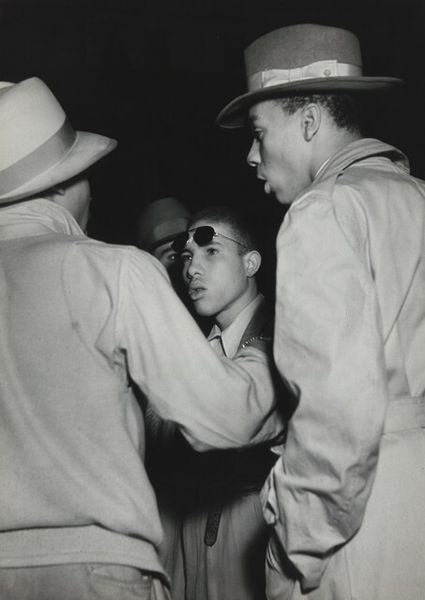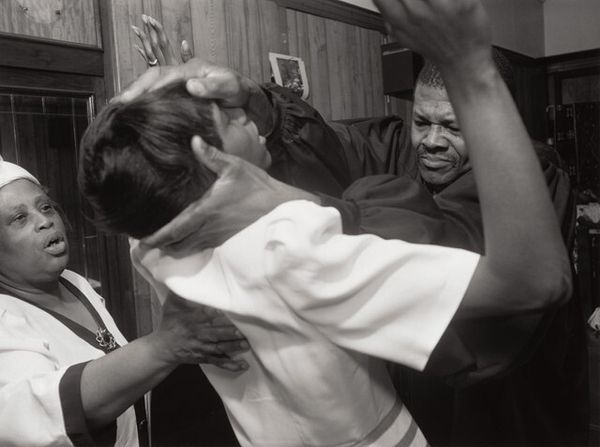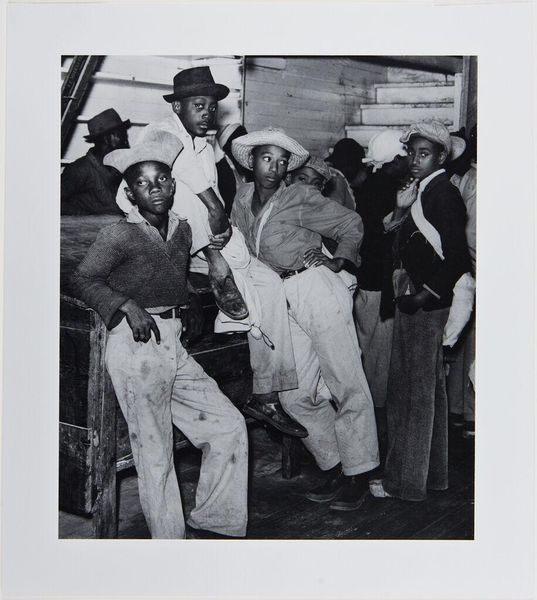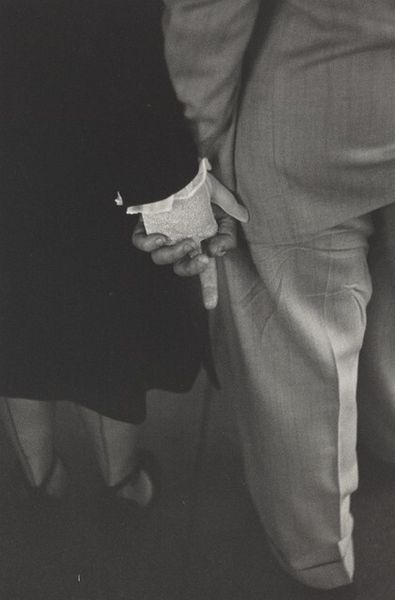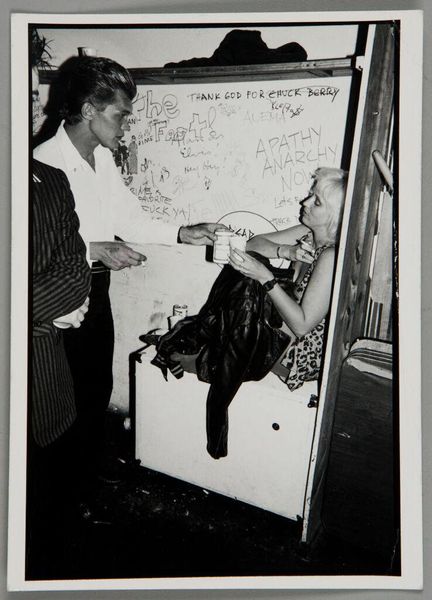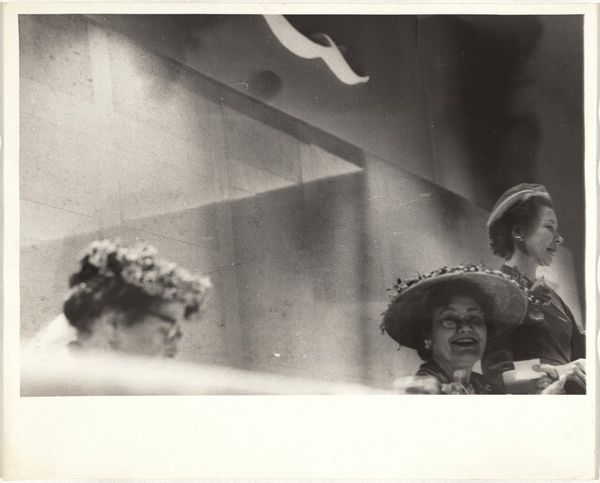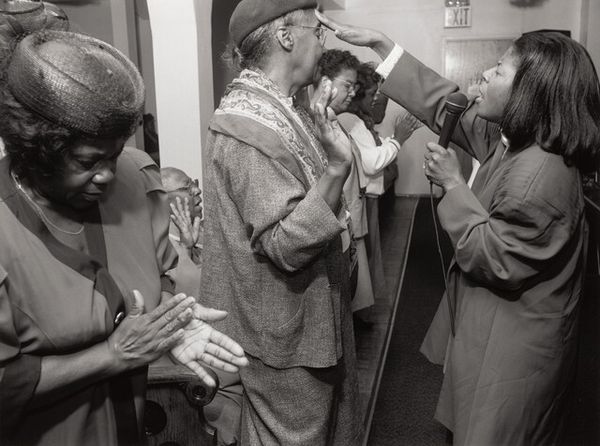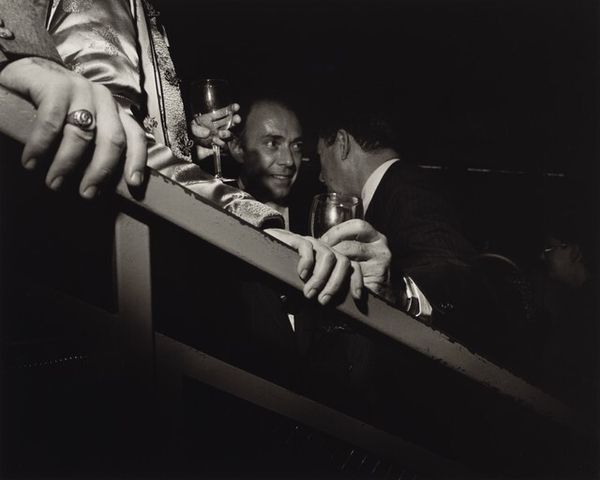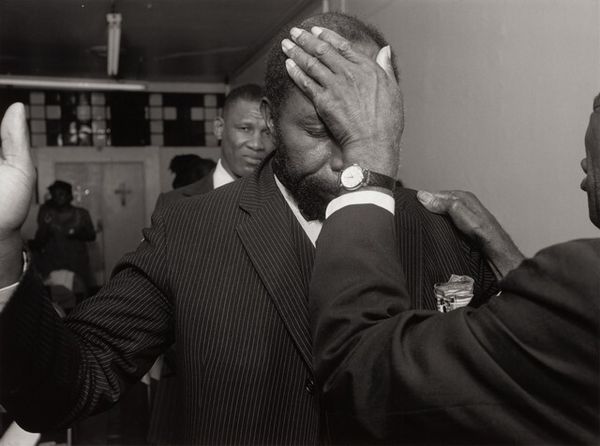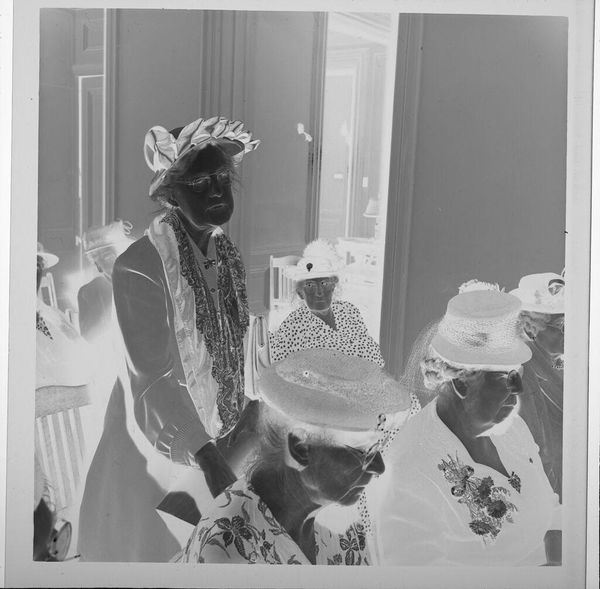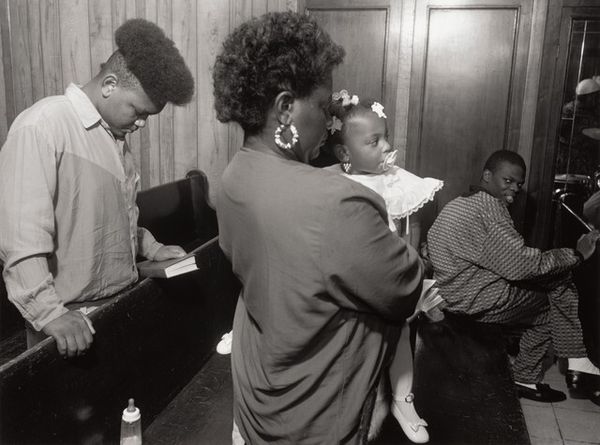
photography
#
portrait
#
contemporary
#
sculpture
#
social-realism
#
street-photography
#
photography
#
monochrome
#
realism
#
monochrome
Dimensions: image: 19 × 28 cm (7 1/2 × 11 in.) sheet: 24.5 × 35 cm (9 5/8 × 13 3/4 in.)
Copyright: National Gallery of Art: CC0 1.0
Curator: Ed Grazda's photograph, titled "Oaxaca, Mexico," taken in 1975, is a compelling work of social realism captured through a monochrome lens. Editor: The first thing that strikes me is how immediate it feels, despite being nearly fifty years old. It’s grainy and high-contrast, creating this sense of starkness. Curator: Grazda's photographs often capture everyday life and social dynamics. His choice of subjects and framing frequently provide insight into community structures. Looking at this image, consider how portraiture functions, both in terms of social realism, but also within the larger discourse of self-representation and visual agency. Editor: I’m drawn to the man holding what looks like a fistful of small photographs. They all appear to be the same image of a face. There's a story there; it begs so many questions. What are those photographs? Who are the people looking at them? Curator: Exactly! Consider that photographs play many roles in social life. They function as documents, obviously, but they are also mementos, commodities, and even political instruments. Images gain cultural currency based on circulation, networks, and access. The political potency of vernacular images shouldn’t be underestimated. Editor: Given the socio-political climate in Latin America at that time, these photos could have an identity and resistance theme. Are we seeing images of missing persons or those affected by political turmoil? What do we know about the context? Curator: Research into the socio-political events unfolding at the time, and the communities being visually represented here could shed some light on possible meanings. The circulation and usage of these small photos can reveal much about personal and community agency. What impact might it have had for this photographic image to exist, as an act of documentary and bearing witness? Editor: I wonder what impact these portraits might have on those holding them and being held. What could this image mean for a community in Mexico? Curator: It's through these dialogues and questions, that we can consider the ways visual culture can affect the cultural landscape in a tangible way. Editor: This has made me consider what social realism in photography can achieve; the way images interact and circulate can reflect, react and instigate.
Comments
No comments
Be the first to comment and join the conversation on the ultimate creative platform.
